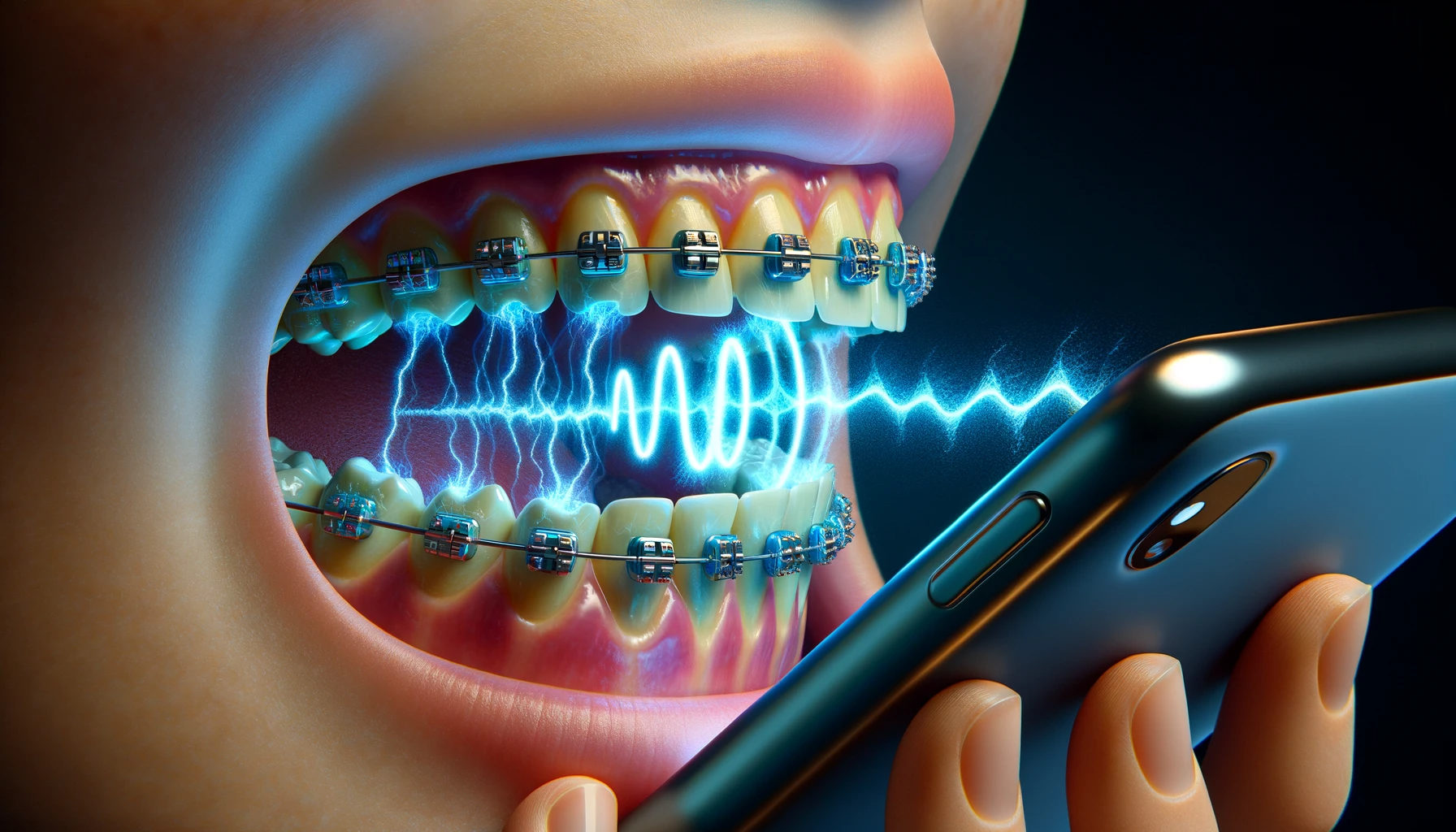The study “Effect of Mobile Phone with and without Earphones Usage on Nickel Ion Release from Fixed Orthodontic Appliance” provides detailed insights into the differences in nickel ion release when using a mobile phone with and without earphones. Here’s a detailed explanation based on the study’s findings:
Study Overview
- Participants: 60 individuals with fixed orthodontic appliances.
- Methodology: The study measured salivary nickel ion levels at different times: baseline (after one week of orthodontic treatment), after using hand-held mobile phones for two weeks, and after using mobile phones with headphones for another two weeks.
Findings on Nickel Ion Levels
- Baseline Measurements: Initially, the nickel ion levels in saliva ranged from 0.35 to 5.23 parts per billion (ppb), with an average of around 1.50 ppb across all participants.
- After Using Hand-Held Mobile Phones: There was a significant increase in nickel ion levels. The values ranged between 3.18 to 11.51 ppb, with an average increase to approximately 6.00 ppb. This indicates a substantial increase in nickel ion release when the mobile phone was used without earphones.
- After Using Mobile Phones with Headphones: The nickel ion levels decreased compared to the hand-held usage phase. The values ranged between 2.21 to 8.45 ppb, with an average decrease to around 4.55 ppb. This suggests that using earphones significantly reduced the release of nickel ions compared to direct mobile phone use.
Implications
- Increased Nickel Ion Release with Hand-Held Phone Use: The study found a significant increase in the release of nickel ions when participants used mobile phones without earphones. This increase is attributed to the proximity of the phone’s electromagnetic fields to the metal orthodontic appliances.
- Reduced Nickel Ion Release with Earphone Use: Using earphones while on the phone significantly reduced the nickel ion release. This reduction is likely due to the decreased proximity of the phone’s electromagnetic fields to the orthodontic appliances.
The study conclusively shows that using a mobile phone in direct contact with the head (without earphones) significantly increases the release of nickel ions from fixed orthodontic appliances. Conversely, using earphones while on the phone can considerably mitigate this effect. This information is crucial for individuals with fixed orthodontic appliances, as it suggests a practical way to reduce potential exposure to nickel ions.
A hidden risk lurks every time they make a call. This article aims to shed light on this overlooked issue and proposes a simple yet effective solution: using earbuds.
Understanding Fixed Orthodontic Appliances
Fixed orthodontic appliances are dental devices used to correct misalignments of teeth and jaws. Comprising brackets, wires, and bands, these appliances are typically made from metal alloys, including nickel, known for its durability and flexibility.
The Nickel Ion Release Phenomenon
One lesser-known aspect of these metal braces is the release of nickel ions. Due to factors like saliva and oral acidity, these metal components can corrode, gradually releasing nickel ions. While most people tolerate these ions well, some may develop allergic reactions, manifesting as oral discomfort or skin irritation.
Mobile Phones and Electromagnetic Fields
Mobile phones emit electromagnetic fields (EMFs), which are essential for wireless communication. When held close to the mouth, the EMFs interact with metal orthodontic appliances. This interaction is hypothesized to influence the corrosion process, potentially escalating the release of nickel ions.
Effect of Mobile Phone with and without Earphones Usage on Nickel Ion Release from Fixed Orthodontic Appliance brings this issue into focus. The study revealed that using mobile phones without earphones led to a significantly higher release of nickel ions compared to usage with earphones. This finding is crucial for anyone with braces.
The Case for Earbuds
Using earbuds or earphones while on a call is more than just a convenience; it’s a health precaution for orthodontic patients. By keeping the phone away from the mouth, earbuds minimize the interaction between EMFs and metal braces, thus reducing the potential release of nickel ions. Additionally, earbuds help limit overall exposure to EMFs, an added benefit for overall well-being.
We encourage all orthodontic patients to consider this practice and stay informed about the latest research in this evolving field.
Children, Mobile Phones, and Radiation Absorption
Increased Vulnerability in Children
While the study “Effect of Mobile Phone with and without Earphones Usage on Nickel Ion Release from Fixed Orthodontic Appliance” primarily focuses on the release of nickel ions, it’s essential to broaden the discussion to consider the overall exposure of children to mobile phone radiation. Children, who are the most common wearers of braces, are particularly susceptible to the effects of radiation from mobile phones for several reasons:
- Less Bone Density: Children’s skulls have less bone density compared to adults. This reduced density allows for more radiation to penetrate into the brain.
- Smaller Head Size: Due to their smaller head size and thinner tissues, children’s brains are more exposed to radiation.
- Developing Nervous System: A child’s developing nervous system is more susceptible to the potential harmful effects of electromagnetic fields (EMFs).
Recommendation for Headset Use
Given these factors, it’s prudent to recommend the use of headsets or earphones for children, irrespective of whether they wear orthodontic appliances. Reducing direct exposure to mobile phones by using these devices can significantly decrease the absorption of radiation:
- Earphones as a Safer Alternative: Equipping children with earphones or headsets when using mobile phones can help minimize direct exposure to the head, thus reducing the risk associated with radiation absorption.
- Educating on Safe Usage: It’s also important to educate children on safe mobile phone practices, such as limiting call duration, increasing the use of text or video messaging, and utilizing speakerphone options.
Conclusion
While the initial focus was on the release of nickel ions from orthodontic appliances due to mobile phone use, extending this concern to the broader context of children’s health and safety underscores the importance of cautious mobile phone use. Providing children with earphones and educating them on safe phone practices are simple yet effective steps in protecting their developing bodies from potential risks.








